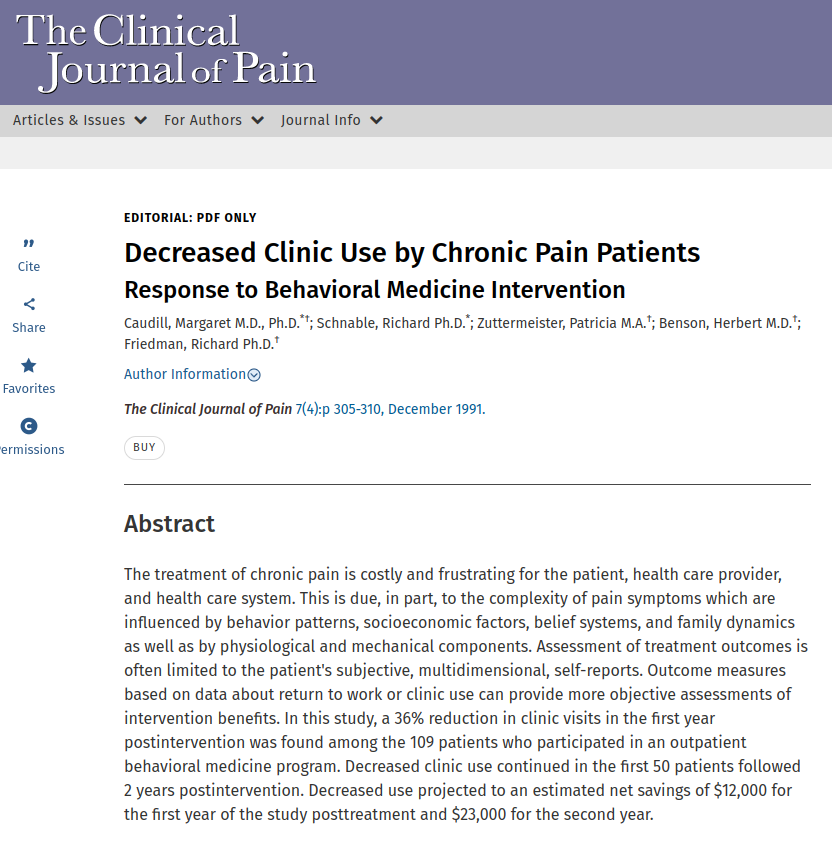The treatment of chronic pain is costly and frustrating for the patient, health care provider, and health care system. This is due, in part, to the complexity of pain symptoms which are influenced by behavior patterns, socioeconomic factors, belief systems, and family dynamics as well as by physiological and mechanical components. Assessment of treatment outcomes is often limited to the patient’s subjective, multidimensional, self-reports. Outcome measures based on data about return to work or clinic use can provide more objective assessments of intervention benefits. In this study, a 36% reduction in clinic visits in the first year postintervention was found among the 109 patients who participated in an outpatient behavioral medicine program. Decreased clinic use continued in the first 50 patients followed 2 years postintervention. Decreased use projected to an estimated net savings of $12,000 for the first year of the study posttreatment and $23,000 for the second year.
Decreased Clinic Use by Chronic Pain Patients Response to Behavioral Medicine Intervention
Publication
The Clinical Journal of Pain
7(4): p. 305-310
Abstract
Web and Email Links
Related Listings
Journal
IEEE Access
Relaxation helps to reduce physical, mental, and emotional pressure. Relaxation techniques generally enable a person to obtain calmness and well-being by reducing stress, anxiety, or anger. When a person becomes calm the body reacts physiologically, producing the so-called Relaxation Response (RResp) which affects the organism in a positive manner, no matter if it is during a state of relaxation or in the middle of a stressful period. The goal of this paper is to design a system capab […]
Journal
The Lancet
A wakeful hypometabolic state may be induced by simple, non-cultic mental techniques or by traditional meditational practices. The hypometabolic state seems to represent an integrated hypothalamic response ("relaxation response") which is consistent with a state of decreased sympathetic-nervous-system activity. A prospective investigation was designed to test whether regular elicitation of the relaxation response might lower blood-pressures in hypertensive patients who were maintained […]
Journal
Minn Med.
Although the physiological and biochemical changes that occur during the acute stress response have been well-characterized, the contrasting changes that underlie the relaxation response evoked by various mind-body techniques are less understood. To help guide future mind-body research, we present a conceptual model that integrates patterns of change at the physiological and molecular levels. In addition, we point to future research opportunities and discuss how repeated elicitation o […]

